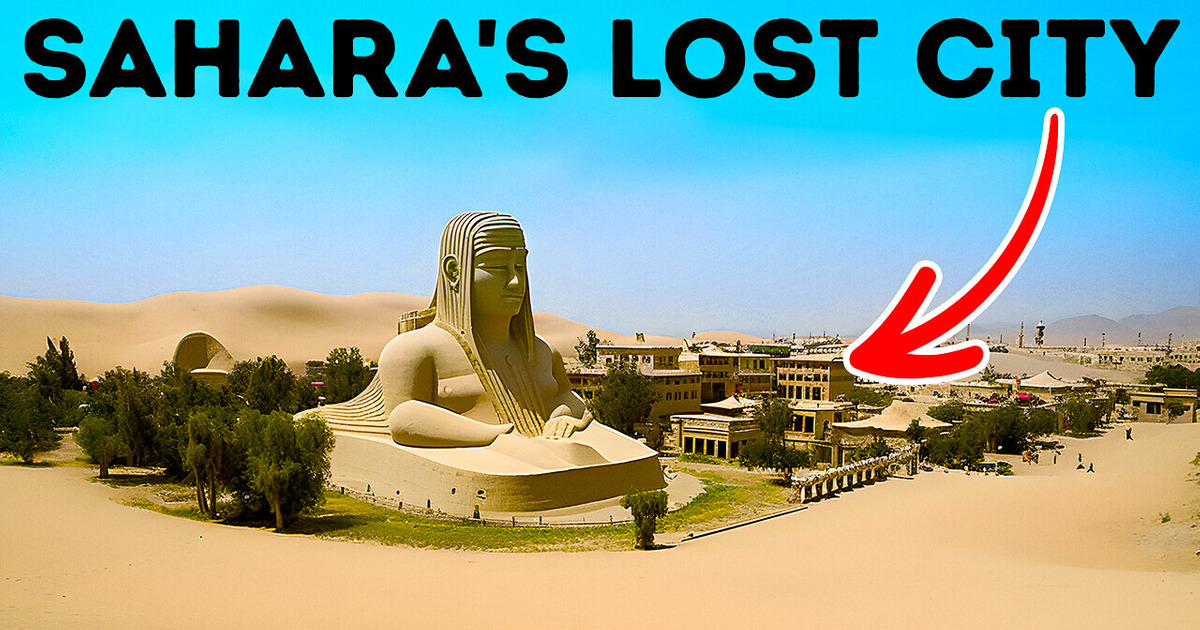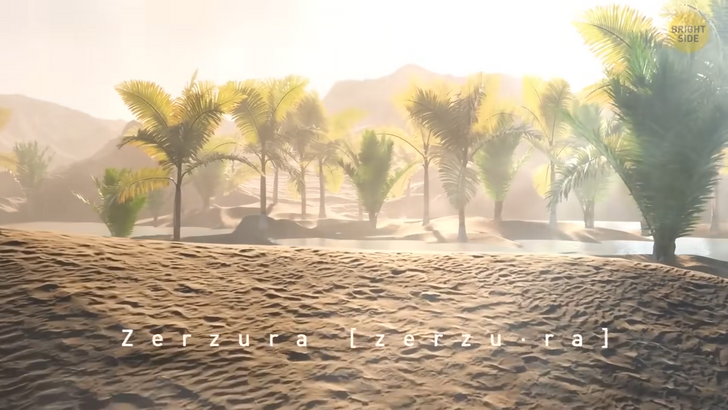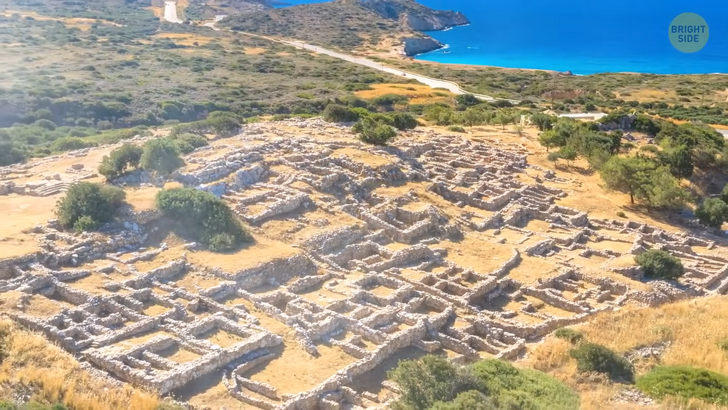My Wife Wanted to Divorce Me Over Dinner, but Her Next Move Made Everything Worse


I bet you’ve never heard of the legendary oasis of Zerzura [zerzu·ra]. This ancient city is said to be hidden somewhere deep in the Sahara desert, and its discovery could mean unimaginable riches and untold secrets. According to an anonymous 15th-century Arabic guide, the key to unlocking the city lies in the beak of a bird carved on the city gate!
Zerzura might not be as popular as Machu Picchu or the pyramids, but that just makes it more mysterious. Legend has it that Zerzura is built around this big oasis somewhere in the desert west of the Nile. Apparently, it’s made out of white stone and has all these luxurious houses and gold decorations.

The story goes that a scribe wrote down the account of a traveler who stumbled upon Zerzura while looking for his lost camel. At one point in his journey, the man got caught up in a sandstorm, where he got separated from the rest of his group. The traveler kept wandering in the desert for days, and then, out of nowhere, two men showed up and guided him to the city of Zerzura. The traveler described this city as an oasis filled with little birds and made out of pure white stonework. The city is also said to be guarded by giants!
In 1835, an English Egyptologist named John Gardner Wilkinson mentioned the city in one of his books. He spoke to a man from Egypt who found the city by accident after days of wandering through the desert. He mentioned some ruins, unusual stonework, and a large oasis surrounded by palm trees. The man even gave some instructions on how the city could be found, indicating that it might be in the Western Desert of Egypt.
But here’s the kicker, even though a group of explorers went out to find Zerzura, they didn’t succeed. At the same time, they did stumble upon a bunch of previously unknown oases. In the early 1900s, numerous expeditions were sent to find the city, including one with a fleet of Ford Model A trucks. But alas, none were successful.

Others say Zerzura did exist at one point, but not anymore. It’s possible it was swallowed by the desert. It’s believed that back in the day, the Sahara Desert was actually green! Scientists even found traces of ancient rivers that flowed through the area 100,000 years ago, creating green corridors across the desert. But Zerzura might have never been real, to begin with!
Maybe it only existed in the minds of people, a figment of their imagination as they were struggling in the African Desert. For thousands of years, people have been obsessed with the hunt for another lost city — Atlantis. But if this place really existed, where on earth (or under the sea) could it be? According to Plato, Atlantis was an actual place. And it was supposedly located somewhere in the Atlantic Ocean, near the Strait of Gibraltar. But how did this mythical city become synonymous with a perfect, paradise-like society?
Well, you can thank Ignatius Donnelly for that. The American writer published a book in 1882 where he outlined 13 hypotheses about the existence of Atlantis. Donnelly truly believed that this lost city was where ancient humans lived in peace and joy for centuries. Donnelly even thought that Atlantis was the original source of many ancient civilizations around the world. And if we just followed Plato’s clues, we could totally find Atlantis. Sounds like a treasure hunt, right?

What inspired Donnelly to go on this quest in the first place, you might ask? Apparently, an amateur archaeologist discovered the city of Troy using Homer’s “The Iliad” as a guide. Well if Troy was real, then why not Atlantis? Back in the day, some people believed that America was the legendary Atlantis. Columbus really stirred up some excitement when he brought back news about the New World to Europe. But the real hunt for Atlantis didn’t really start until the 20th and 21st centuries.
Some people tried to connect the dots between a volcanic eruption on the island of Santorini and the destruction of Minoan settlements. But in 2018, a team of investigators claimed they had nailed it, announcing they had discovered “concrete proof that Atlantis had existed.”
What was their evidence, you ask? A series of mysterious circles in a national park in Spain. But the circles turned out to be nothing more than experimental ponds for studying zooplankton. Let’s face it, there’s no real evidence that Plato’s lost city of Atlantis actually existed, but it doesn’t make searching for it any less exciting, does it?

The fountain of youth isn’t a lost city per se, but it is another mythical location that many have claimed to have stumbled upon over the years. Long ago, people were obsessed with the idea of living forever — or at least extending their lives as much as possible. Each culture had its own wild story, like the Greeks talking about a magic fountain that let people live longer or Alexander the Great finding a “river of paradise” that could heal the wounded.
Japanese legends spoke of hot springs that could make you young again, while the Caribbean locals talked about the restorative powers of the water in one of their own mystical lands. Explorers searched far and wide for these magical waters, but nothing. Probably the most famous of all was the story of the Spanish explorer Juan Ponce de Leon, who thought he’d found it in Florida.
Now, Ponce de Leon was quite a character. He sailed with Columbus, and became an important figure in the area now known as the Dominican Republic. He found gold in Puerto Rico and even became the island’s administrator. But when the ruler of Spain decided to replace him in his duties, he got upset and decided to explore Florida, looking for gold and the elusive fountain of youth. He explored the Bahamas, but sadly, he didn’t find any gold or magic water. He did, however, make his way to Florida.

He explored the coast and even discovered the Gulf Stream. Unfortunately, his last expedition didn’t go well, and he was wounded. But the legend of him searching for the fountain of youth lived on. Even though historians don’t think he was really looking for the fountain of youth, thousands of people visit the Fountain of Youth Archaeological Park every year to try the sulfur-smelling water. It’s the oldest attraction in Florida which has been around since the 17th century. Some say the water has unusual properties, but I’ll leave that up to you to decide after you visit this place.
Norse mythology has its own mysterious land called Thule [too·lee]. It’s said to be somewhere between Scandinavia and Iceland, where the sun barely shines, and the cold bites hard. The folks there survive on a diet of millet, herbs, fruits, and roots, washed down with a grain and honey brew. As for its exact location, scholars can’t seem to agree on it to this day.
The legendary Ancient Greek explorer Pytheas [pi·te·as] was said to be the first to stumble upon Thule during his quest for tin mines. He sailed his way up north, passing by Scotland, and after six long days of sailing, he reached Thule. The people there, according to Pytheas, were quite primitive, but that’s no surprise since they were just simple farmers living off the land. They showed Pytheas where the sun set on the shortest day of the year. They also told him that in winter, the sun never rose at all. And in summer, there was no night.

For many years, historians have been debating the true identity of this mythical land of Thule. Some say it’s Iceland, while others claim it’s Norway. A little bit of progress has been made recently, with the help of a team of researchers.
If their findings are correct, Thule might be the elusive island of Smøla [smo·lah]! That’s farther south than any of the Norwegian islands that were on the list of contenders. It may be too soon to celebrate, but it does look like Thule has finally been found!











